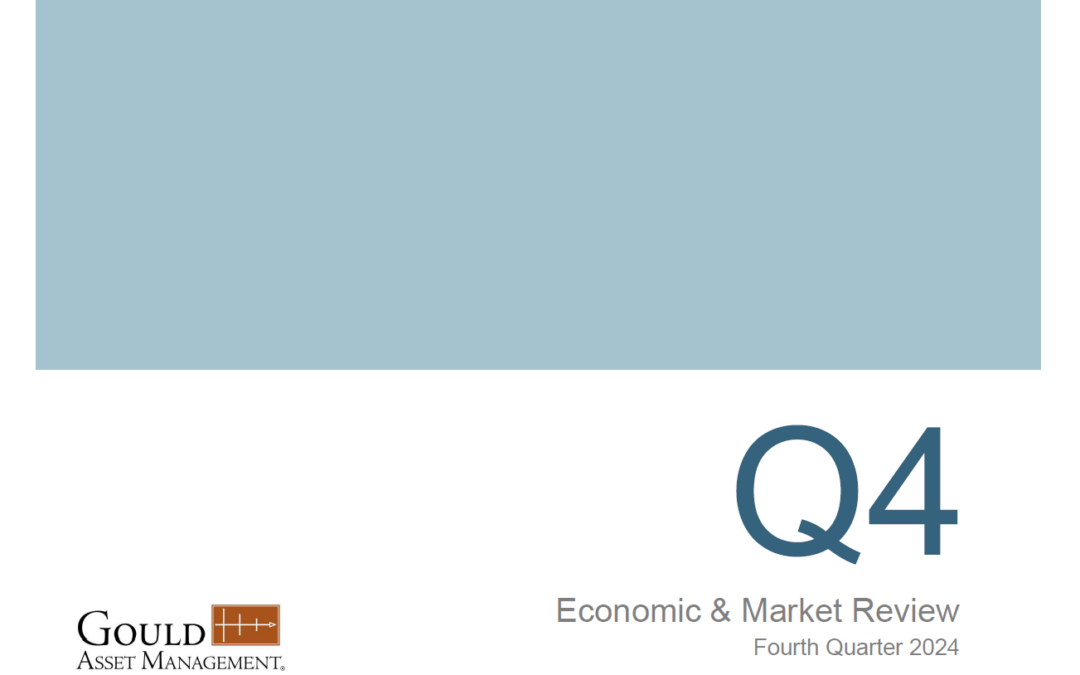by The Gould Asset Management Team
Note: This post is an excerpt from Gould Asset Management’s Economic and Market Review for the Fourth Quarter of 2024. The excerpt is posted here for the benefit of our blog subscribers.
US Stocks Outperform International by Wide Margin in Q4 and 2024
Global stock market performance was mixed in the fourth quarter of 2024, capping off a strong year for many markets. US equities advanced, albeit at a much slower pace than in the first three quarters. Eurozone and Asia markets declined amid concerns over potential new US trade tariffs and political instability in countries like France and Germany.
US large-cap stocks, represented by the S&P 500 index, rose 2.4% in Q4 2024, capping a robust 25.0% gain for the year. After the election, stocks first climbed on expectations of lower taxes and easier regulations, but then gave back gains as those same policy expectations contributed to a jump in long-term interest rates
Consumer Discretionary (up 12.1%) led all US sectors in Q4, finishing the year with a sparkling 26.6% gain on the back of solid consumer spending. Communication Services (up 8.9%) and Technology (up 3.1%) also performed well, and were among the best performing sectors on the year, rising 40.2% and 21.7% respectively. AI was a consistent theme in 2024, driving investor interest and market returns.
US mid and small cap stocks modestly outperformed large caps in Q4, with the Wilshire 4500 stock index rising 4.0% on the period. For the year, US mid and small cap stocks posted strong gains (up 16.9%), but couldn’t keep pace with large caps and the “Magnificent 7” stocks that accounted for more than half of the gains on the S&P 500.
The MSCI EAFE Index fell in Q4 (down 8.1%), finishing 2024 with a modest gain (up 4.4%), impacted by slowdowns in Germany and China, a strong US dollar, and geopolitical uncertainties like potential US trade tariffs. Similarly, the MSCI Emerging Markets Index declined for the quarter (down 7.8%) but rose for the year (up 8.1%), hindered by currency weakness.
Market volatility increased in Q4, due to election uncertainties and policy concerns. The VIX index, a key barometer of market volatility, rose from 16.7 at the start of the quarter to 23.0 around the election, before dropping to 12.7 during a market rally. It later spiked above 28 due to rising bond yields and settled at 17.3 to close 2024.
To continue reading, please see our entire Economic and Market Review.

